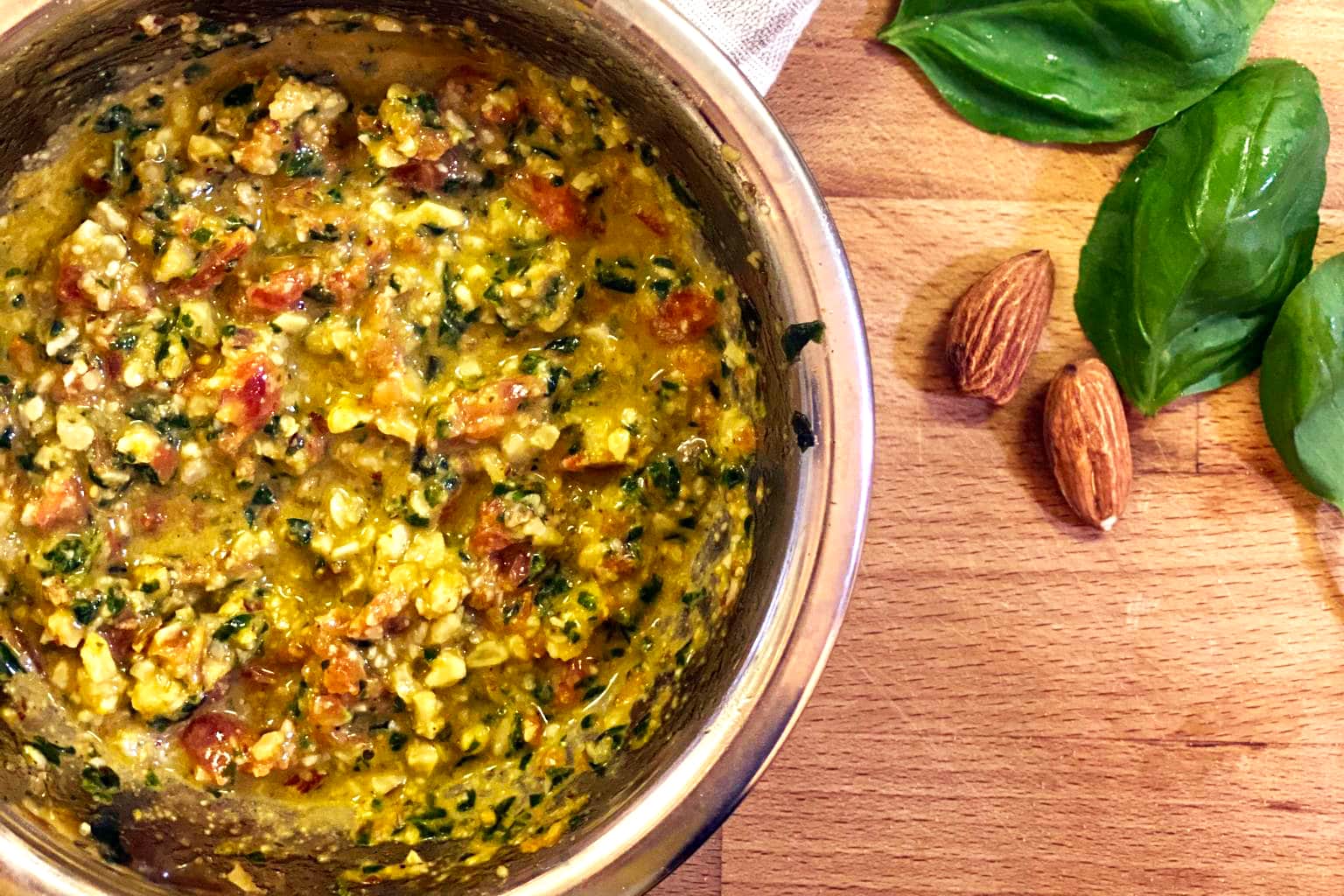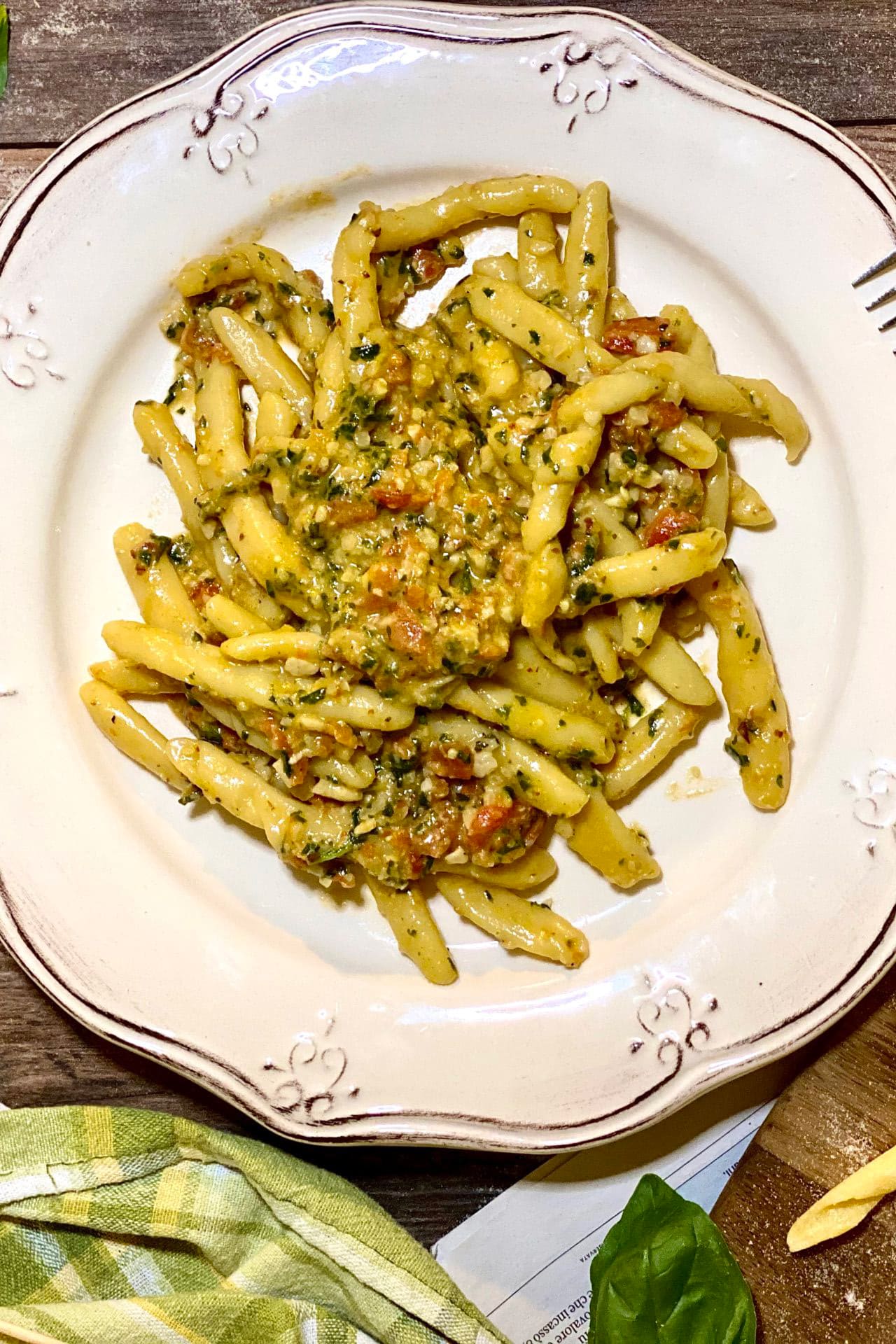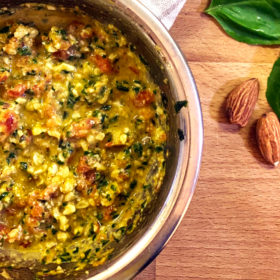Pesto alla Trapanese is a famous and delicious Sicilian sauce. It is one of those dishes you must try at least once in your life.
The story goes that pesto alla trapanese, also known as agghiata trapanisa, originated in the port of Trapani, a place of barter and exchange between cultures. It owes its origins to the transit of Genoese merchant ships loaded with products headed to the far East. Among these many products there was the Genoese agliata, a pesto prepared with basil, garlic and walnuts.
The people of Trapani adapted the recipe to the natural ingredients of their territory. Accordingly, they added what Sicily had to offer: almonds, tomatoes, basil, garlic and extra virgin olive oil. This gave rise to an ideal sauce for seasoning pasta, and also meat and bread. Consequently, this sauce became ideal for farmers and sailors.
Trapanese pesto has had and still has an essential position of gastronomic and economic centrality. Its components are: garlic from Nubia (Paceco), pizzutello tomatoes from Paceco, extra virgin olive oil from the Trapanese Valleys, sea salt from Trapani and Paceco, Erice almonds, basil, and pecorino cheese.

The final product is a pesto mainly used as an accompaniment to pasta.
Traditionally, pesto alla trapanese is consumed with busiate, a type of fresh pasta very common in western Sicily. Busiate is long and twisted, perfect for holding the sauce. This type of fresh Sicilian pasta is made only with water and durum wheat. It takes its name from the term buso, a knitting needle used in the Trapani area to work wool and cotton. Another derivation points to the buso, the stem of the “Disa”, a Mediterranean plant used in the past by farmers to tie bundles of ears. The busa was inserted on the stick of fresh pasta which was then “hollowed out” to form the characteristic spiral shape of the busiate.
Traditionally, the pesto is prepared in a wooden mortar in order to retain all the properties of the ingredients, and to prevent any alteration to those ingredients.


Do you think this could be good cold? Like a cold pasta salad. Thank you
Ciao Patrick, yes it’s another delicious way to enjoy it!